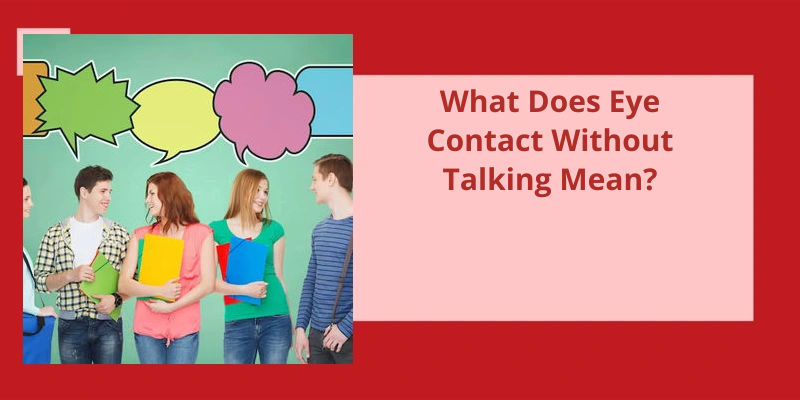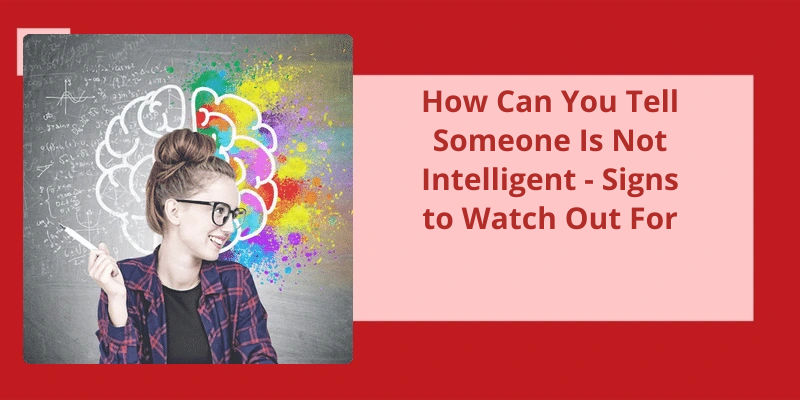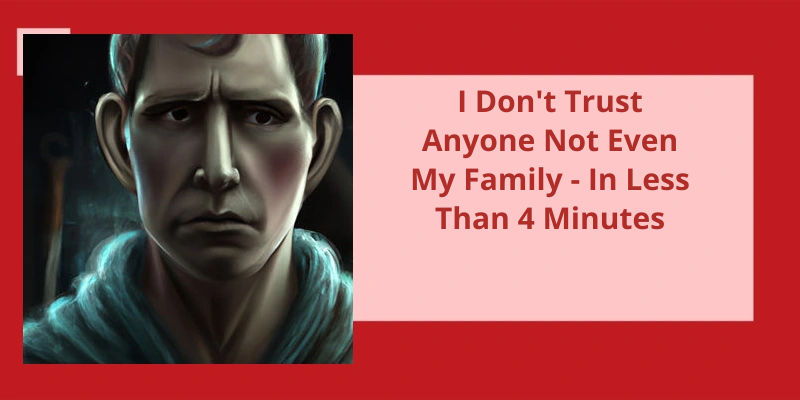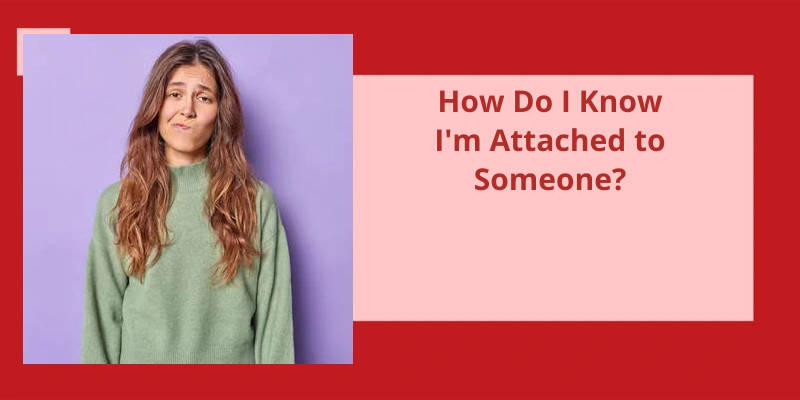It’s said that eyes are windows to the soul, and intentional prolonged eye contact can speak volumes without a single word being uttered. When someone looks into your eyes without speaking, it signifies their undivided attention and genuine interest in you. It creates a sense of trust and intimacy, forming a strong emotional bond. Through eye contact, one can decipher a person's thoughts, feelings, and intentions, as facial expressions paired with prolonged gaze reveal a wealth of untold emotions. It means that someone is fully engaged in understanding you, respecting your presence, and valuing the connection you share.
What Does It Mean When Someone Avoids Looking at You?
They may be feeling uncomfortable or anxious in your presence and thus avoid eye contact as a means of self-protection. It could also indicate a lack of interest or disengagement with the conversation or situation. Avoiding eye contact can be seen as a form of nonverbal communication, conveying a message without words.
If youre concerned about someones avoidance, it may be helpful to approach the subject with empathy and open communication, providing a safe space for them to express any concerns or discomfort they may be experiencing.
The Cultural and Societal Differences in Eye Contact: Explore How Different Cultures and Societies Have Varying Norms and Expectations When It Comes to Eye Contact and How It Can Impact Interpersonal Interactions.
Eye contact is a powerful nonverbal form of communication that can convey a range of emotions and messages. However, the meaning and significance of eye contact without talking can differ across cultures and societies.
In some cultures, direct eye contact is seen as a sign of respect, honesty, and engagement. It’s expected during conversations and indicates active listening and interest. In these contexts, prolonged eye contact may be interpreted positively, signaling trust and connection.
Conversely, in other cultures, maintaining direct eye contact can be considered disrespectful, confrontational, or invasive. People may avoid or limit eye contact out of respect, politeness, or to show humility. In these societies, looking away, down, or avoiding eye contact altogether can be seen as a sign of politeness and respect for personal space.
Understanding these cultural and societal norms is crucial for effective cross-cultural communication. Misinterpreting or disregarding these norms can lead to misunderstandings, discomfort, or even offense. So, it’s important to be sensitive to and aware of the varying expectations regarding eye contact in different cultures and societies.
When two people engage in uninterrupted and prolonged eye contact, it often signifies a deeper level of interest and attentiveness. By maintaining steady eye contact with a guy during your interaction, you’re communicating that you value and are interested in him, giving him the impression that you’re fully engaged in the conversation or activity at hand.
What Does It Mean When You Keep Making Eye Contact With Someone?
Eye contact is a powerful form of nonverbal communication that can convey a great deal of meaning. When you consistently make eye contact with someone, it often suggests that you’re genuinely interested in them and what they’ve to say. In fact, maintaining prolonged eye contact can signify a level of interest that exceeds the words being spoken or the activities taking place around you.
By focusing your attention on someone and maintaining eye contact, you’re showing that you value their presence and are actively listening to them. This can be particularly significant when it comes to interactions with a romantic interest.
Furthermore, eye contact without talking can also signify an unspoken connection or chemistry between two individuals. It can serve as a way to establish a deeper emotional bond or create an intimate connection that extends beyond words. In these moments, the eyes become the primary medium through which emotions and intentions are exchanged.
In addition to conveying interest, eye contact can also create a sense of trust and openness in a conversation. It creates a sense of connectedness and allows for a deeper understanding and connection to develop.
How to Make Effective Eye Contact in Professional Settings
- Maintain good posture and sit or stand up straight.
- Look directly at the person you’re speaking to.
- Avoid excessive blinking or looking away too often.
- Focus on one eye or switch between both eyes.
- Be mindful of cultural differences and adjust accordingly.
- Practice active listening and show interest through your eyes.
- Don’t stare excessively or make the other person uncomfortable.
- Use eye contact to convey confidence and build trust.
- Pay attention to nonverbal cues and respond accordingly.
Conclusion
Whether intentional or unconscious, prolonged eye contact shows that you’re fully focused on the other person, conveying a sense of trust and understanding. This form of communication goes beyond words, allowing you to tap into the depths of emotional connection and gain insight into someone's thoughts and feelings through their facial expressions. It’s a silent but profound way to create meaningful connections and forge deeper bonds without uttering a single word.






